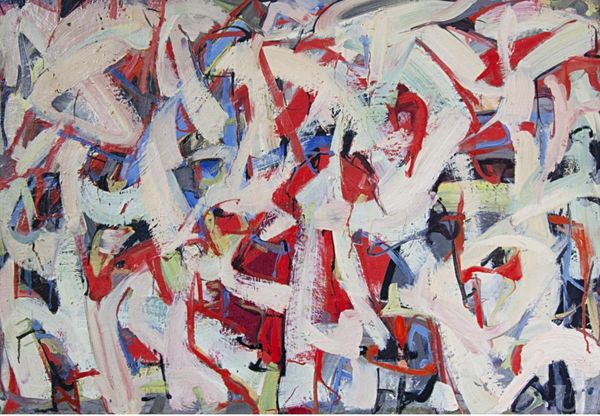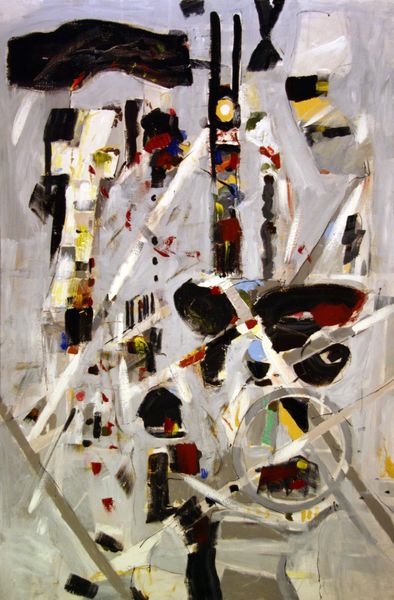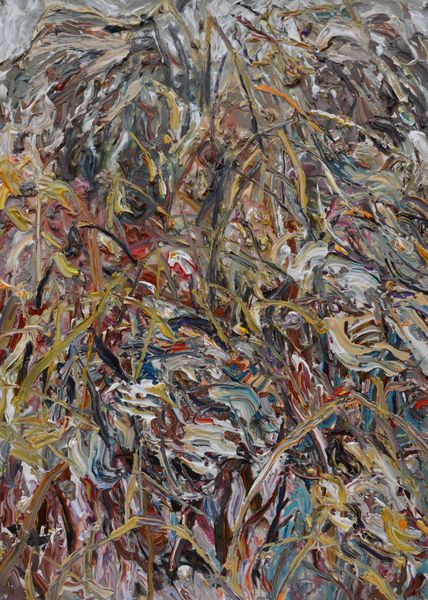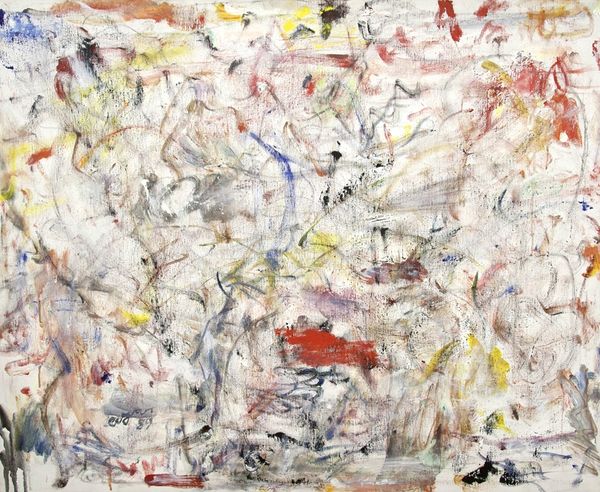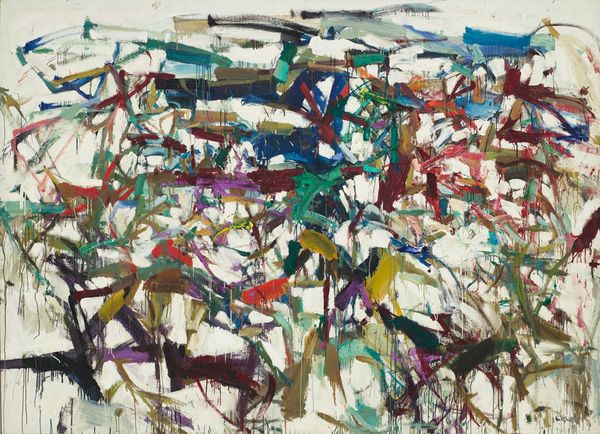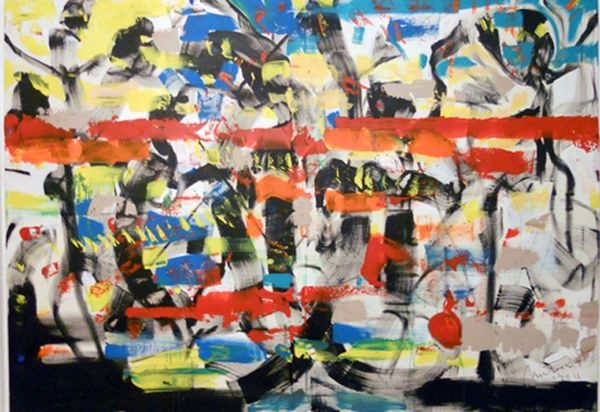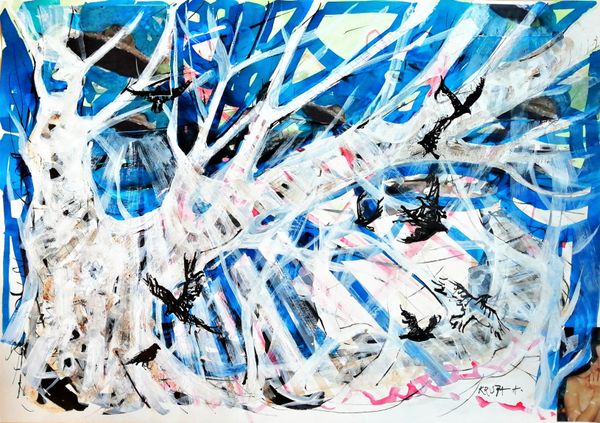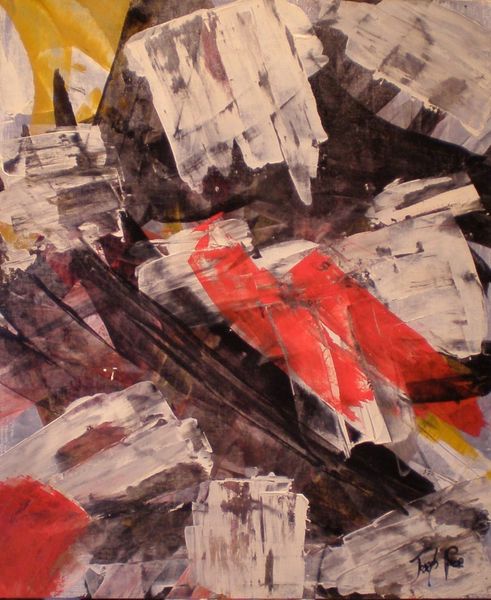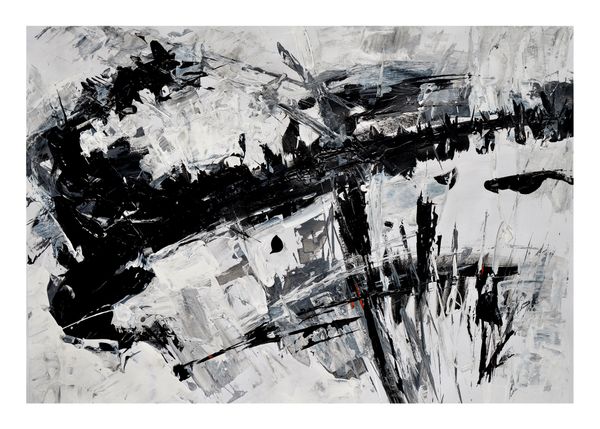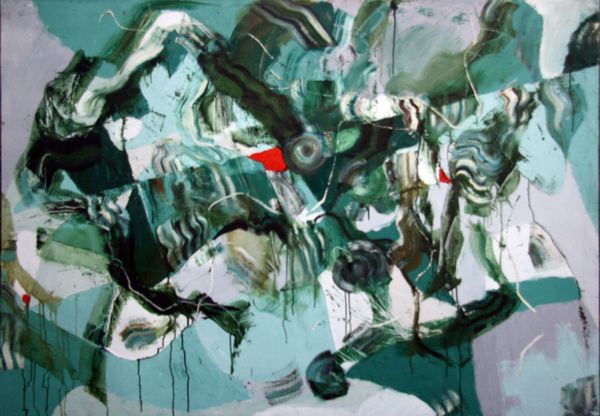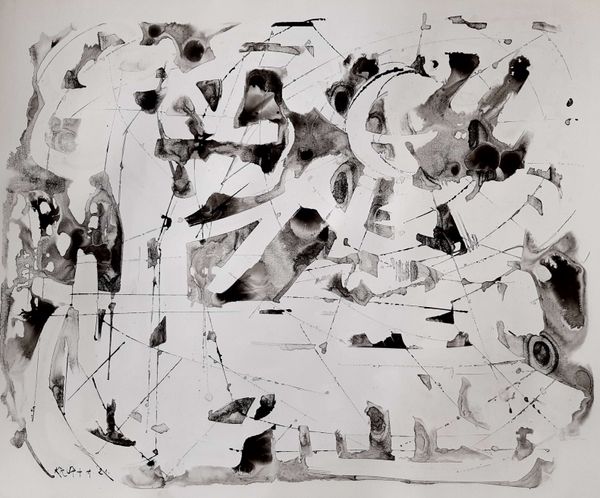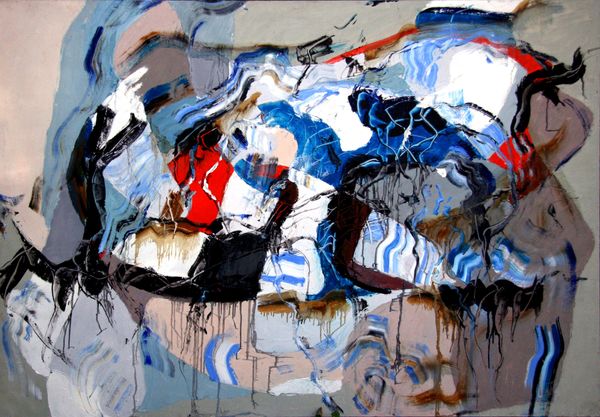
acrylic-paint, impasto
#
abstract-expressionism
#
abstract expressionism
#
landscape
#
acrylic-paint
#
impasto
#
neo expressionist
#
acrylic on canvas
#
abstract-art
#
abstract art
Copyright: Paul-Émile Borduas,Fair Use
Curator: Alright, let's turn our attention to "Jardin d'Hiver," attributed to Paul-\u00c9mile Borduas. The impasto application of acrylic gives it a really distinctive feel, wouldn't you agree? Editor: Woah. My first impression is a blizzard of the mind. Like someone shook up a snow globe really, really hard. There's something both frenetic and calming about it, which is a strange duality. Curator: That's quite insightful. The layering, the deliberate strokes...it speaks volumes about Borduas's exploration of abstract expressionism and the cultural shift happening at the time. These kinds of gestural abstraction pushed against the academic traditions of painting. Editor: Yeah, I can see that push. It's not pretty, in a traditional sense. It’s messy, visceral. I imagine him almost attacking the canvas. Tell me, in the context of post-war art, where does this land? It feels like a liberation cry in paint form! Curator: Exactly! The post-war period was a hotbed for experimentation. Many artists aimed to express emotions and psychological states through non-representational forms. In many respects, his works mirrored the tensions in post-war Quebec. Editor: Mmm, you know, there's also something really honest about it. It feels like pure, unadulterated feeling poured onto the surface. Almost reckless, really. I'm intrigued by how the thick paint transforms a landscape motif into an experience. It almost ceases to be a representation. Curator: Yes! And consider that "Jardin d'Hiver" isn't just a literal winter garden. It’s a space for reflection, a mental landscape perhaps. This artwork showcases a significant break from representational forms. What are we left with, but with emotion and feeling. Editor: You're right. Thinking about it more deeply, this impasto technique makes the artwork exist beyond simple visual interpretation. It wants to be touched, felt. Curator: That haptic quality enhances the work’s appeal as a physical object, drawing attention to its materiality in ways that engage with our post-modern awareness about perception. It demands your attention, and invites deeper reflection. Editor: I must say, thinking about its physicality has made me appreciate it more. I arrived with snow-globe imagery but will leave intrigued and more pensive than before. Curator: Precisely. This work always reminds me that the purpose of museums should also include broadening visitors' perspectives.
Comments
No comments
Be the first to comment and join the conversation on the ultimate creative platform.
